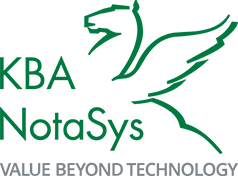Integrity Pacts are a flexible tool that can help make public procurement more transparent and fair and reduce the risk of corruption.
An Integrity Pact is usually an agreement between a government procurement authority and bidding companies. Tailored to each tender and country, it commits all parties to refrain from bribery, corruption or collusion. An Integrity Pact typically involves an independent monitor and a clear process for reporting, resolving and sanctioning integrity issues.
The benefits
Integrity Pacts have been proven in various cases to:
- Increase trust in public procurement among governments, businesses and citizens;
- Increase competition by levelling the playing field;
- Reduce the costs of procurement and contract implementation;
- Prevent delays in the tender cycle or project implementation.
Integrity Pacts do not guarantee these benefits. In some cases, a lack of political will has led to parties not complying with the requirements and monitors withdrawing from their role. In others, cost increases or delays in the tender or contract implementation have been unavoidable. However, even in these cases the Integrity Pact has helped make the reasons for delays or cost increases transparent, increasing trust and fairness.
Exploring the evidence
Since Transparency International pioneered the concept in the 1990s, Integrity Pacts have been used in hundreds of procurement projects in at least 32 countries in a wide range of sectors.
In 2015, the Basel Institute on Governance and Blomeyer & Sanz conducted a Learning Review analysing the use and impact of Integrity Pacts based on rigorous research and surveys. Additional countries have implemented Integrity Pacts since then, expanding the evidence base. The European Commission launched a six-year project in 2016 that has deployed Integrity Pacts in 18 projects in 11 EU countries.
The toolbox for promoting integrity, transparency and corruption prevention in public procurement has expanded greatly in recent years. What is the comparative advantage of each of the tools? In which contexts are Integrity Pacts most valuable? Practitioners agree we need more clarity, coherence and critical analysis.
About this resource
Developed by the Basel Institute's Collective Action team in 2020 under a project funded by the KBA-NotaSys Integrity Fund, this online resource aims to provide practical and accessible insights into the what, why and how of Integrity Pacts. It is designed for anyone intending to promote, design, implement, monitor or observe an Integrity Pact, including:
- Governments and procurement authorities
- Private-sector actors participating in public tenders
- Civil society organisations
- Technical experts in various industries
- Citizens
To learn more, explore the pages below. You'll also find examples of real Integrity Pacts in our database, several case studies, plus a resources page with our recommended toolkits and other publications.
Support in implementing an Integrity Pact
The Basel Institute on Governance offers comprehensive support to government procurement authorities in developing, implementing and monitoring an effective Integrity Pact.
Contact Gemma Aiolfi for more information.
Notes and acknowledgements
We are grateful to the KBA-NotaSys Integrity Fund for supporting the creation of this resource and hope that you find it useful. We also warmly thank the many expert practitioners and representatives of governments and businesses with experience using Integrity Pacts who have contributed their time and expertise.
We have done our best to verify all information included on these pages, but we cannot guarantee its accuracy and take no liability for its use or misuse. We will be happy to receive corrections, suggestions, additions or requests for more information. Please contact Vanessa Hans.






